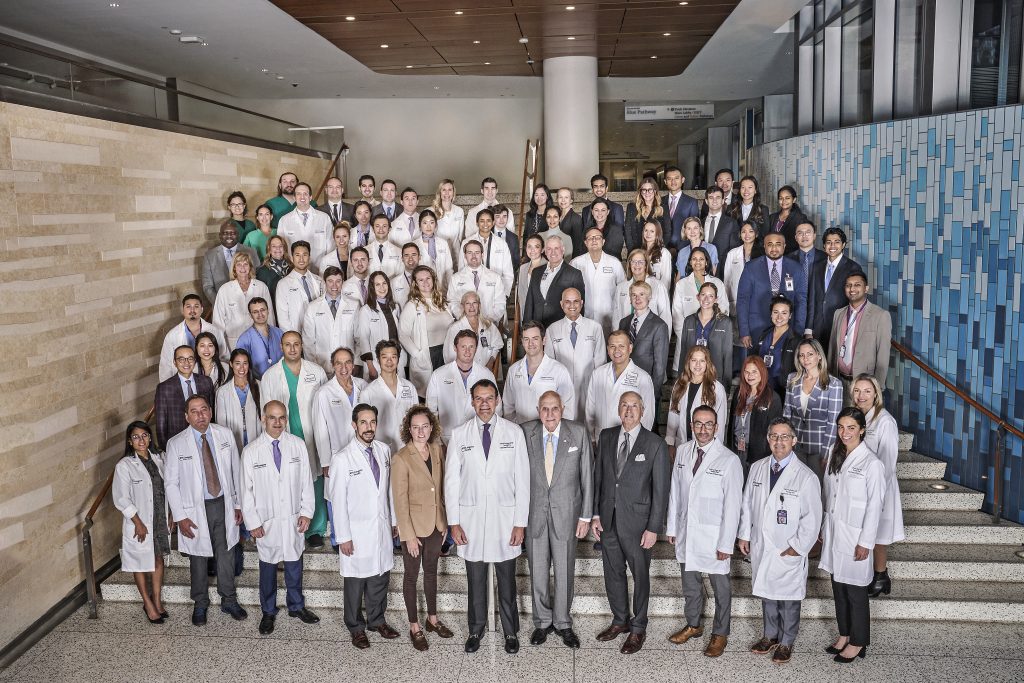Belgian 3D printing company Materialise has played a crucial role in the success of the breakthrough first-ever eye transplant.
On May 27, a surgery took place at NYU Langone Health Hospital in New York, showcasing advancements in reconstructive procedures. A distinctive element of this surgical event was the incorporation of 3D technologies in the medical field. The collaboration involved Materialise, and Depuy Synthes, the Orthopedics Company of Johnson & Johnson, collectively utilizing advanced technology for presurgical planning and the actual procedure. This integration played a pivotal role in enhancing the surgical process.
“This is the first attempt of injecting adult stem cells into a human optic nerve during a transplant in the hopes of enhancing nerve regeneration,” said A Samer Al-Homsi, MD MBA, executive director of the Transplantation and Cellular Therapy Center, and professor in the Department of Medicine at NYU Langone. “We chose to use CD34-positive stem cells which have been shown to harbor the potential to replace damaged cells and neuroprotective properties.”
 Medical staff that carried out the surgery. Photo via NYU Langone Health Hospital.
Medical staff that carried out the surgery. Photo via NYU Langone Health Hospital.
A second chance at life
The recipient, Aaron James of Hot Springs, Arkansas, had suffered a life-threatening 7,200-volt electric shock in June 2021 while working as a high-voltage lineman. The surgery not only marked the first successful whole-eye transplant but also the initial instance of combining it with a partial face transplant. The decision to include a whole-eye transplant with the face was aimed at maximizing reconstructive options for extensive injuries James sustained, including the loss of his left eye, dominant left arm, entire nose and lips, front teeth, left cheek area, and chin down to the bone.
The success of the surgery, accomplished with one of the shortest waiting times for a donor (three months), and the utilization of innovative techniques, such as injecting adult stem cells into the optic nerve during the transplant, represents a significant milestone in the field of transplantation. Dr. Rodriguez, in collaboration with the team at NYU Langone’s Transplantation and Cellular Therapy Center, decided to combine the donor eye with donor bone marrow-derived adult stem cells to enhance the reconstructive process.
“What we’re witnessing now is not something we ever expected or thought we’d see,” said Dr. Dedania, who runs regular tests for James in relation to his eyes. “The first step is having an intact eyeball, a lot of things could come after that; this is a first in the world, so we are really learning as we go.”
Remarkable signs of the transplanted left eye’s health, including direct blood flow to the retina, have been observed, opening new possibilities for advancements in vision therapies and related medical fields. However, the long-term success of the eye transplant remains uncertain, with lingering questions about nerve regeneration, immune rejection, and retinal blood flow. These unresolved aspects render this breakthrough case an ongoing subject of research and exploration.
“I’m grateful beyond words for the donor and his family, who have given me a second chance at life during their own time of great difficulty. I hope the family finds solace in knowing that part of the donor lives on with me,” said James. “I will also forever be thankful to Dr. Rodriguez and his team for changing my life. My family and I wouldn’t have been able to navigate this difficult journey without their expertise and support. Our hope is that my story can serve as inspiration for those facing severe facial and ocular injuries.”
Manufacturing on Demand
3D printing technologies making lives better one step at a time
This year, the United States featured the first-ever spinal implant made from Evonik‘s VESTAKEEP i4 3DF PEEK filament biomaterial. Developed by Curiteva and approved by the U.S. FDA, the implant is a fully interconnected porous polyether ether ketone (PEEK) structure for commercial use. Utilizing the Inspire platform, the surgeries marked a significant advancement in spine, orthopedics, and neurosurgical procedures. Evonik’s PEEK material meets stringent surgical implant standards, offering exceptional biocompatibility, bioactivity, and X-ray transparency.
Clinicians at the Claudius Regaud Institute and Toulouse University Hospital successfully performed a nose transplant on a patient using a 3D bioprinted implant grown on her forearm. The patient, who lost part of her nose to cancer in 2013, agreed to this novel approach after previous reconstruction surgeries failed. The 3D bioprinted nose was implanted onto her forearm, grown for two months, revascularized through microsurgery, and then successfully transplanted onto her face.
You might also like:
3D Systems, Axtra3D, and Oqton forge alliance to boost dental 3D printing with next-generation solution: In a collaborative effort, Axtra3D, Oqton, and 3D Systems have introduced a new dental solution aimed at meeting the complex requirements of dental laboratories at Formnext 2023.
* This article is reprinted from 3D Printing Industry. If you are involved in infringement, please contact us to delete it.
Author: Ada Shaikhnag

Leave A Comment